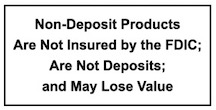Ag Marketing Tips
7 Tips For A Strong Marketing Plan
There is no one-size-fits-all approach to marketing and for many producers it can be the worst part of the job, but having a plan in place will take some of the risk off the table. The American Bankers Association’s Agricultural and Rural Bankers Committee recommends the following to help producers tackle the complicated task of marketing:
1. Know your break-even costs. Factor in all of your costs including input, debt service and family living expenses. To get a better idea of what your yield might be, take your 3-year, 5-year or Olympic average (eliminate the high and low of the last five years and average the rest). You can also find ballpark figures from university agricultural extension services or an advisory firm. Use an excel spreadsheet to add up and track your costs.
2. When there’s an opportunity to profit, act on it. Once you understand your production costs, you’ll have a better idea of when you can sell for a profit. You’re not always going to hit the high, but selling at a profit—even a small one—takes some of the risk off the table. One of the biggest mistakes can be inaction because you think prices are going to go up or you’re going to miss a rally.
3. Set a goal and stick to it. You could set a date to have all of your marketing completed, plan to market 10 percent each month, or set a goal to market 1, 2 or even 3 years out. Creating a plan will help you stay on track. With so much volatility in agriculture, no one can be totally sure what’s going to happen, but having an organized plan can help.
4. Take the emotions out of it. Finding the right person or company to work with can go a long way to remove your emotions from the mix. Talk to your banker for recommendations and understand your options. Whether it’s a marketing advisory firm, programs offered by your local co-ops and elevators, or your in-house financial manager—find someone you trust and are comfortable with.
5. Keep things simple. You don’t have to do a lot of fancy footwork to make a profit. You may not always hit a homerun, but sticking to your marketing plan can help you stay in business.
6. Avoid spot markets. Don’t wait until you need to make a loan payment or you need cash. That will leave you vulnerable to what the market can give you at that time. Keep track of your local basis and understand the benefits of forward pricing.
7. Understand the tools available. Hedge to Arrive contracts, forward pricing, marketing loans to cover hedging expenses, hedging lines of credit, the role of crop insurance—it’s complicated, but your banker is there to help you make sense of the options. Don’t be afraid to ask questions and find the best solution for you and your operation.


